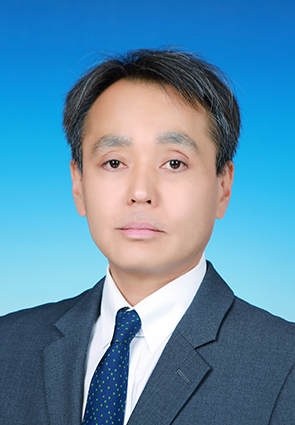 |
Sei Yoshida(吉田 整) |
|
性别: 男 部门: 遗传学和细胞生物学系 电话: 18020003587 办公地址: A402 职称: 教授 招生专业: 细胞生物学 邮箱: seiyoshi@nankai.edu.cn 通讯地址: |
个人简介My name is Sei Yoshida (吉田 整). I got my PhD at 東京大学, then spent more than 10 years at the University of Michigan in the US. I moved to 南开大学生命科学学院 to start my lab. If you are interested in Cell Biology (membrane trafficking, macrophage) and/or study in the US/Japan, please contact me. For the details, please see the English version.
教育经历(1) 1990-4至1994-3, 立教大学, 物理, 学士
(2) 1996-4至1998-03, 立教大学, 生命科学, 硕士, 导师: Keisuke Mashima
(3) 1998-4至2002-3, 东京大学, 微生物和免疫学, 博士, 导师: Chihiro Sasakawa
工作经历(1) 2002-4至2006-7, 东京大学, 博士后, 导师: Chihiro Sasakawa
(2) 2006-8至2009-5, 密歇根大学, 博士后, 导师: Joel A Swanson
(3) 2010-2至2012-9, 密歇根大学, 博士后, 导师: Ken Inoki
(4) 2009-6至2010-1, 芝加哥伊利诺伊大学, 医学院, 助理研究教授
(5) 2012-10至2016-8, 密歇根大学, 微生物和免疫学, 研究调查员
(6) 2016-9至2018-8, 密歇根大学, 微生物和免疫学系, 助理研究员
(7) 2018-9至2020-2, 密歇根大学, 分子与综合生理学院, 助理研究员
(8) 2020-3至现在, 南开大学, 生命科学学院, 教授
研究方向主要研究方向为: 1.细胞膜运输及信号转导的作用和机制。 2.肿瘤细胞中巨胞饮和mTORC1通路的相互作用。 3.肾脏足细胞(上皮细胞)中的巨胞饮功能与疾病的关系 详见实验室网站:https://seiyoshida-lab.github.io/ 科研成果1. Swanson JA* and Yoshida S*. (2018). Macropinosomes as units of signal transduction. Philosophical Transactions of the Royal Society B. 374: 20180157 (review)
*Co-corresponding Author
2. Yoshida S*, Pacitto R, Sesi C, Kotula L, and Swanson J*. (2018). Dorsal Ruffles Enhance Activation of Akt by Growth Factors. Journal of Cell Science. 131: jcs220517 doi: 10.1242/jcs.220517
*Co-corresponding Author Highlighted in “First Person” (J Cell Sci 2018 131: jcs226373) Highlighted in “Research Highlight” (J Cell Sci 2018 131: e2201)
3. Rosselli-Murai LK, Yates JA, Yoshida S, Bourg J, HoKKY, White M, Prisby J, Tan X, Altemuc M, Bao L, Wu ZF, Veatch SL, Swanson JA, Merajver SD, and Liu AP. (2018). Loss of PTEN promotes formation of signaling-capable clathrin-caoted pits. Journal of Cell Science.131: jcs208926 doi: 10.1242/jcs.208926
4. Yoshida S, Pacitto R, Inoki K and Swanson J. (2018). Macropinocytosis, mTORC1 and Cellular Growth Control. Cellular and Molecular Life Sciences. 75: 1227-1239 doi: 10.1007/s00018-017-2710-7 (review)
5. Pacitto R, Gaeta I, Swanson JA and Yoshida S*. (2017). CXCL12-induced macropinocytosis modulates two distinct pathways to activate mTORC1 in macrophages. Journal of Leukocyte Biology. 101: 683-692 doi: 10.1189/jlb.2A0316-141RR
*Corresponding Author Highlighted on the cover
6. Yao Y, Wang J, Yoshida S, Nada S, Okada M and Inoki K. (2016). Role of Ragulator in the Regulation of Mechanistic Target of Rapamycin Signaling in Podocytes and Glomerular Function. Journal of American Society of Nephrology. 27: 3653-3665 doi: 10.1681/ASN2015010032
7. Swanson JA and Yoshida S. (2016). Macropinocytosis. Encyclopedia of Cell Biology. (R.A. Bradshaw and P. Stahl, Eds.). 2: 758-765. (Book chapter)
8. Yoshida S, Pacitto R, Yao Y, Inoki K and Swanson JA. (2015). Growth Factor Signaling to mTORC1 by Amino Acid-laden Macropinosomes. Journal of Cell Biology. 211: 159-172. doi: 10.1083/jcb.201504097
Highlighted in “Research Round-up” (J Cell Biol. 2015. 211: 1)
9. Yoshida S, Gaeta I, Pacitto R, Krienke L, Alge O, Gregorka B and Swanson JA. (2015). Differential signaling During Macropinocytosis in Response to M-CAF and PMA in Macrophages. Frontiers in Physiology. 6:8. doi: 10.3389/fphys.2015.00008.
10. Huber TB, Edelstein CL, Hartleben B, Inoki K, Jiang M, Koya D, Kume S, Lieberthal W, Pallet N, Quiroga A, Ravichandran K, Susztak K, Yoshida S and Dong Z. (2012). Emerging role of autophagy in kidney function, diseases and aging. Autophagy. 8: 1009-1031. (Review)
All authors contributed equally
11. Feliciano WD, Yoshida S, Straight SW, and Swanson JA. (2011). Coordination of the Rab5 cycle on macropinosomes. Traffic. 12:1911-1922. doi: 10.1111/j.1600-0854.2011.01280.x.
12. Yoshida S, Hong S, Suzuki T, Nada S, Mannan AM, Wang J, Okada M, Guan KL, and Inoki K. (2011). Redox regulates mTORC1 activity by modulating the TSC1/TSC2-Rheb pathway. Journal of Biological Chemistry. 286:32651-32660.
13. Inoki K, Mori H, Wang J, Suzuki T, Hong S, Yoshida S, Blattner SM, Ikenoue T, Ruegg MA, Hall MN, Kwiatkowski DJ, Rastaldi MP, Huber TB, Kretzler M, Holzman LB, Wiggins RC, Guan KL. (2011). mTORC1 activation in podocytes is a critical step in the development of diabetic nephropathy in mice. Journal of Clinical Investigation.121:2181-2196.
14. Narita M, Young AR, Arakawa S, Samarajiwa SA, Nakashima T, Yoshida S, Hong S, Berry LS, Reichelt S, Ferreira M, Tavare S, Inoki K, Shimizu S, Narita M. (2011). Spatial coupling of mTOR and autophagy augments secretory phenotypes. Science. 332: 966-970.
15. Nagamatsu K, Kuwae A, Konaka T, Negal S, Yoshida S, Eguichi M, Watanabe M, Mimuro H, Koyasu S, Abe A. (2009). Bordetella evades the host immune system by inducing IL-10 through a type III effector, BopN. Journal of Experimental Medicine. 206:3073-3088.
16. Yoshida S, Hoppe AD, Araki N, and Swanson JA. (2009). Sequential signaling in plasma-membrane domains during macropinosome formation in macrophages. Journal of Cell Science. 122:3250-3261. doi: 10.1242/jcs.053207.
Highlighted in “In this issue” (J Cell Sci. 2009. 122)
17. Yoshida S, Handa Y, Suzuki T, Ogawa M, Suzuki M, Tamai A, Abe A, Katayama E, and Sasakawa C. (2006). Microtubule-severing activity of Shigella is pivotal for intercellular spreading. Science. 314:985-989.
Highlighted in “Perspectives” (Science, 2006. 314:931) Highlighted in “Research Highlights” (Nature, 2006. 444:246)
18. Matsuzawa T, Kuwae A, Yoshida S, Sasakawa C and Abe A. (2004). Enteropathogenic Escherichia coli activates the RhoA signaling pathway via the stimulation of GEF-H1. EMBO Joural. 23:3570-3582.
19. Yoshida S and Sasakawa C. (2003). Exploiting host microtubule dynamics: A new aspect of bacterial invasion. Trends in Microbiology. 11:139-143. (Review)
20. Yoshida S, Katayama E, Kuwae A, Mimuro H, Suzuki T, and Sasakawa C. (2002). Shigella delivers an effector protein to trigger host microtubule dynamic-instability, which promotes Rac1 activity and efficient bacterial internalization. EMBO Journal. 21:2923-2935.
Highlighted in “Research Round-up” (J Cell Biol. 2002. 158:10)
21. Kuwae A, Yoshida S, Tamano K, Mimuro H, Suzuki T, and Sasakawa C. (2001). Shigella invasion of macrophage requires the insertion of IpaC into the host plasma membrane. Journal of Biological Chemistry. 276:32230-32239.
Complete List of Published Work in My Bibliography: http://www.ncbi.nlm.nih.gov/myncbi/browse/collection/49444569/?sort=date&direction=ascending
社会兼职教学经历荣誉称号 |
|
|
|
52 访问 |